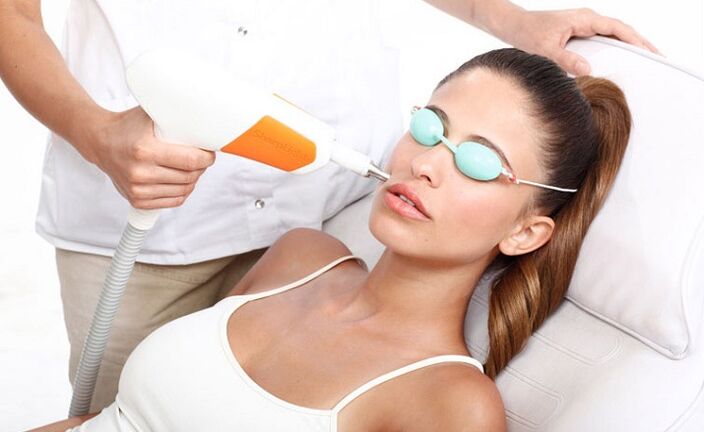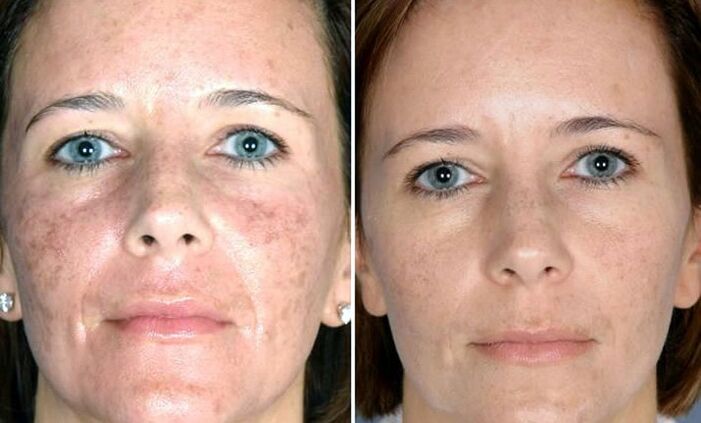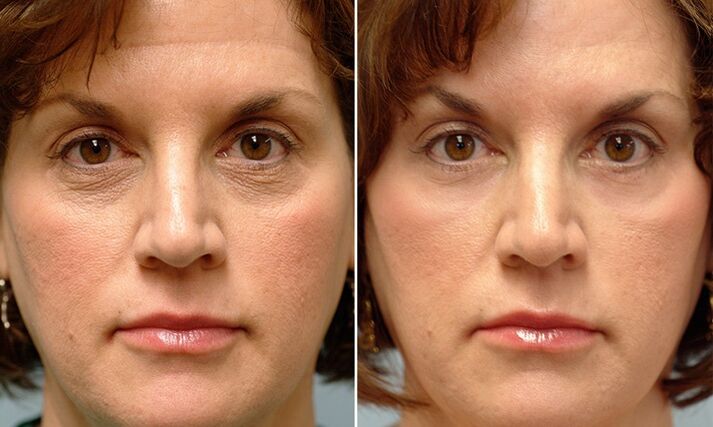From the time of Cleopatra to the present day, there is not a single representative of the fairer sex who does not want to prolong the youth and beauty of the skin. Modern medical science offers a variety of anti-aging surgeries and procedures and is never surprised by the latest developments in the field of cosmetology.
Particularly popular methods allow you to get rid of external signs of aging without the use of scalpels or Botox injections. Fractional laser rejuvenation is currently the fastest and safest way to combat skin aging.

What is a fractional laser and how does it "rejuvenate"
When the laser touches the skin, it burns and spreads deep. Active healing (regeneration) processes begin, which provide the desired cosmetic effect. This procedure is also known in cosmetology as laser skin rejuvenation.
If a single laser splits into many micro beams, a fractional laser beam is obtained. This light no longer acts on the skin as a whole, but as a broken microgrid. After fractional laser thermolysis, the burnt skin is located in the form of numerous microdotes among the intact skin. This procedure significantly reduces the trauma (as well as pain) and allows the skin to recover faster.
Upon exposure to the laser, intact skin cells actively divide, forming collagen and elastin, giving the skin elasticity and youthful appearance.
Types of fractional photothermolysis
Ablat
Under the influence of laser radiation, water evaporates from the tissues, creating an "open" microscopic wound around which damaged (burned) cells are located.
During the healing process, there is a lifting effect, but there is a risk of infection penetrating deep into the skin.
Not normal
Radiation is used to leave the epidermis, so that evaporation from the tissues and "open" ulcers do not occur. Burns appear and heal under the epidermis, so there is no risk of infection, but the rejuvenating effect of this procedure is insignificant.
The cosmetologist chooses the method of fractional rejuvenation depending on the condition and type of skin.
Effects and advantages of fractional laser thermolysis
The main difference between equipment and all other procedures is the optimal balance of safety and efficiency.
The main plus:
- ability to affect any part of the body (including the décolleté, neck, eyelids);
- a wide range of indicators;
- physiology (the area of damage is only 20% of the laser area);
- short recovery period (2-7 days);
- method of anesthesia - application;
- the possibility of using it on people with dark skin (because it does not lead to hyperpigmentation);
- duration of the result (from one to several years).
The downside is the lack of knowledge on all aspects of fractional laser exposure, as the technology itself has only recently emerged.
Factional rejuvenation indicators:
- wrinkles (at different depths and locations);
- decrease in the elastic properties of the skin;
- enlarged pores;
- pigmentation;
- acne;
- spider roots;
- scars (postoperative, left after acne);
- On the skin of the mammary glands, including stretch marks (stretch marks).
Features of fractional laser thermolysis
A few days before the photothermolysis procedure, the cosmetologist may prescribe antibacterial or antiviral drugs in prophylactic doses.
Fractional rejuvenation per day should completely eliminate physical activity, smoking and alcohol.
Before the procedure, the skin is thoroughly cleansed and treated with a special anesthetic cream. In some cases, anesthesia is not required.
The effect of the laser feels like "itching" or "itching". The duration of the procedure (from a few minutes to an hour) and their number are selected separately. After the laser treatment, a soothing nourishing cream is applied to the skin.
Next skin care:
- Moisturize the skin with a special cream 2-3 times a day (for 2 weeks);
- protect the skin from UV rays for 2 months (do not go to the solarium, use a sunscreen with a protection factor of at least 30);
- do not use peels and scrubs (within 2 weeks);
- Do not use cosmetics containing salicylic acid and retinol (within 2 weeks);
- do not wear compression underwear for several days (if the body has undergone fractional photothermolysis);
- Restriction (elimination) of smoking and alcohol during the entire course of treatment (reduction of the regenerative functions of the skin).

On average, the rehabilitation period lasts up to 3 days after non-fractional laser thermolysis and up to 7 days after abbotic thermolysis.
After the procedure, the skin changes
Redness, discomfort, and slight swelling of the skin may occur for 1-3 days after exposure to the laser. If this condition is not subjectively allowed, painkillers and skin cooling can be used.

After a few days, the skin of the colon may appear discolored (burning effect), which lasts up to 2 weeks and disappears on its own. Dryness and peeling of the skin is observed within 5-7 days after fractional rejuvenation.
Adverse effects and contraindications for photothermolysis
After the procedure, the following problems can occur due to improper skin care, non-compliance with recommendations or technical errors in laser treatment:
- Redness of the skin lasting more than 3 days;
- tumor at the site of exposure, lasting more than 2 days;
- exacerbation of herpes infection (if it was previously in the treatment area);
- infection (appearance of streptoderm);
- erosion, burns in the affected area;
- clear bleeding;
- hyperpigmentation.
To avoid undesirable effects, the procedure of fractional laser rejuvenation is checked and possible contradictory indications are ruled out.
Absolute contraindications:
- pregnancy and breastfeeding;
- the tendency to form keloid scars;
- acute infectious process (including herpes);
- oncological pathology;
- post-radiation condition, chemotherapy;
- epilepsy;
- serious disorders of the immune system;
- taking retinoid-containing drugs;
- Exacerbation of psoriasis (atopic dermatitis).
Compared to:
- renal pathology;
- Diabetes mellitus;
- inflammation at the site of exposure;
- unwillingness of the patient to follow the recommendations of the cosmetologist;
- mental illness;
- allergy to anesthesia;
- autoimmune diseases;
- new start (visit to the solarium in the last month);
- The final rejuvenation procedures (affects the deeper layers of the skin - the last three months, superficially - within 10 days).
Reviews of laser rejuvenation and images of patients in the "before" and "after" series generally undermine the effectiveness and low trauma of this method of preserving youth.

Remember!The procedure can only be performed by specialists (surgeons or dermatovenereologists) who are licensed to work with laser devices. Competence of a doctor is the key to your beauty!














































































